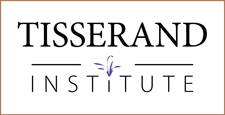Aromatic Chemistry Certification Course
In this seven lesson course, Dr. Joy Bowles, scientist and essential oil educator, will take you down the wonderful rabbit hole of organic chemistry – all the way down to the molecular level – and illustrate in understandable terms how and why essential oils are able to deliver therapeutic effects.
Next Enrollment: 2025
Aromatic Chemistry
Payment in full- Payment in full
Aromatic Chemistry
Payment plan- Three payments of $130 over 3 months.
Aromatic Chemistry covers all you need to know about essential oil molecules!
We start with an introduction to organic chemistry and the building blocks of essential oils. Joy will share her unique insights into how essential oils interact with the body on a cellular level, focusing on five key essential oil constituents we wouldn’t want to live without.
Building on that knowledge, we will go into chemical structures, nomenclature, and analysis of essential oils. The course delves into the relationships between chemical families, and the chemical changes that typically occur over the lifecycle of the whole essential oil – from the plant material to body metabolism after application.
With her signature enthusiasm, Dr. Joy will demystify the molecular makeup of essential oils so you can make better therapeutic decisions and more accurate safety assessments.
What You Get in the Program
WEEKLY LESSONS
Seven pre-recorded lessons presented by Dr. Joy Bowles.
Q&A SESSIONS
Three live Q&A Sessions
PRINTABLE COURSE MATERIAL
Extensive downloadable handouts and course notes with links to additional research and resources.
DEDICATED GROUP DISCUSSIONS
Access to our private online forum to ask questions and interact with Joy, the TI team, and classmates.
CONSTITUENT PROFILES
Concise profiles of the essential oil constituents discussed in the program.
ONGOING COURSE ACCESS
Ongoing access to the learning platform for two months after course completion.
Dr. Joy Bowles; PhD, BSc Hons
Aroma Science Educator and International Speaker
In 1991, Dr. Joy Bowles wrote the first course in essential oil chemistry in Australia. Her book The Chemistry of Aromatherapeutic Oils, published in 2003, is a standard text for aromatherapy courses around the world. This work moves step-by-step at the molecular level through 89 essential oils, along with techniques for applying the benefits of aromatherapy to the various body systems.
For her PhD, awarded in 2007, Dr. Joy investigated the effects of essential oils on cognitive function in dementia. After several years in primary healthcare, she’s returned to the field of essential oil chemistry, training practitioners on the evidence-based therapeutic effects of essential oils. Helping people understand the chemistry and pharmacology of essential oils is one of her life’s passions.
Course Breakdown
Next Enrollment: 2025
Lesson 1 - Atoms & Molecules
- What chemistry helps us to explain
- Types of atoms found in essential oils
- The bonding capacity of hydrogen, carbon, and oxygen atoms
- Why most atoms form bonds to make molecules, and examples of molecular bonds
- Using symbols to represent atoms and molecules, including simple carbon-based molecules
Lesson 2 - Essential Oil Molecules
- Types of molecules found in essential oils
- Molecular features that impact therapeutic properties
- Overview of essential oil chemical families and their biological effects
- The clinical significance of relationships between essential oil chemical families, such as alcohols and esters, phenols and phenyl-methyl ethers, and more
Lesson 3 - Important Constituents
- The therapeutic properties of five key constituents: Limonene, Linalool, Terpinen-4-ol, 1,8-cineole, and Beta-caryophyllene
- Summary of essential oils where these key constituents are typically found
- Comparison of the therapeutic activities of these essential oils in relation to the proportion of their active constituents
Lesson 4 - Chemical Structure & Analysis
- GC-MS analysis and examples of whole essential oils and their constituents
- Acids, lactones, furans, furanocoumarins, diterpenes, diketones, peroxides and sulfur compounds
- Differences in composition of steam-distilled essential oils, solvent-extracted absolutes, super- and sub-critical C02 extracts
- Effects of constituent concentration on essential oil properties
- Constituent profiles: bergapten and coumarin
Lesson 5 - Chemical Relationships
- Chemical names that sound similar but have different endings
- Close relationships that are not obvious from their common names, such as limonene and perillyl alcohol
- Why isomers matter, and molecules that have (and don’t have) optical isomers
- Constituent profiles: carvone isomers, carvacrol, and thymol
Lesson 6 - Chemical Changes
- Overview of chemical changes that occur over the lifecycle of an essential oil: within the plant, on distillation, through storage, and on application to the body
- Explanation of degradation and catalysis
- Processes involved in chemical changes, including hydrolysis, reduction, and oxidation
- Constituent profiles: menthol, citral, and citronellal
Lesson 7 - Chemical Messages
- Molecular features that might influence biological effect
- Synergy versus antagonism, and the challenges of predicting effect
- The risks of extrapolation from constituent to whole essential oil, and the need for good clinical studies
- Constituent profiles: eugenol and methyl salicylate
What previous students say about our courses:
When You Complete the Course
SAFETY CERTIFICATION
A signed Certificate of Completion issued by the Tisserand Institute and a letter with CEU confirmation.
GLOSSARY OF CHEMISTRY TERMS
A handy quick reference for deciphering words such as aliphatic, carboxylic, methylation, oxygenation, and more!
UNIQUE KNOWLEDGE
The program will empower you with thorough, evidence-based chemistry information.
Aromatic Chemistry Certification
Your certificates will be signed by Dr. Joy Bowles and Robert Tisserand. These demonstrate your knowledge of essential oil chemistry basics and the dynamic molecular makeup of essential oils.
Don’t miss your chance to uncover the science behind ‘how’ essential oils work, and make more accurate therapeutic choices. Join Dr. Joy Bowles as she draws on her unique experience as a scientist and aromatherapist to unlock the fascinating mysteries of essential oil chemistry.
Ready to get started?
FAQs
Will there be notes for me to review?
I am a certified aromatherapist. Will I learn anything new?
I am new to essential oils. Is this course for me?
“The information presented is appropriate for all levels, and although I am just beginning my aromatherapy journey it all makes sense.”
Will there be assessments or exams? What kind?
Each weekly lesson is followed by a multiple choice quiz, and there is a summary test at the end of each course. Passing both the weekly quizzes and the final tests is a requirement for certification.
You will be given enough time to prepare for the test as well as three attempts to pass.
Will I be able to ask questions?
Absolutely! In addition to the live Q&A sessions, you can post your questions in the dedicated student forums where the tutor and the TI team will address them.
What if I cannot participate on a live session?
All of our live sessions are recorded and are posted on the learning platform within 24 hours so you can watch them, or rewatch as needed during the course.
How long will I have access to the recordings?
You will have access to all the videos for at least four weeks after the last lesson (see course description for clarification as this changes for individual courses). All the printable materials (notes, handouts, charts, etc.) are of course yours to keep for reference forever.
Do you offer continuing education credits?
Because we have students from all over the world and of many professions we are not able to offer credits for specific organizations – there are simply too many. However, we issue a confirmation of CE hours gained on the course that you can apply with your professional organization and will be happy to assist with any additional documentation.
At the moment, we are an Approved Continuing Education Provider with NAHA.

